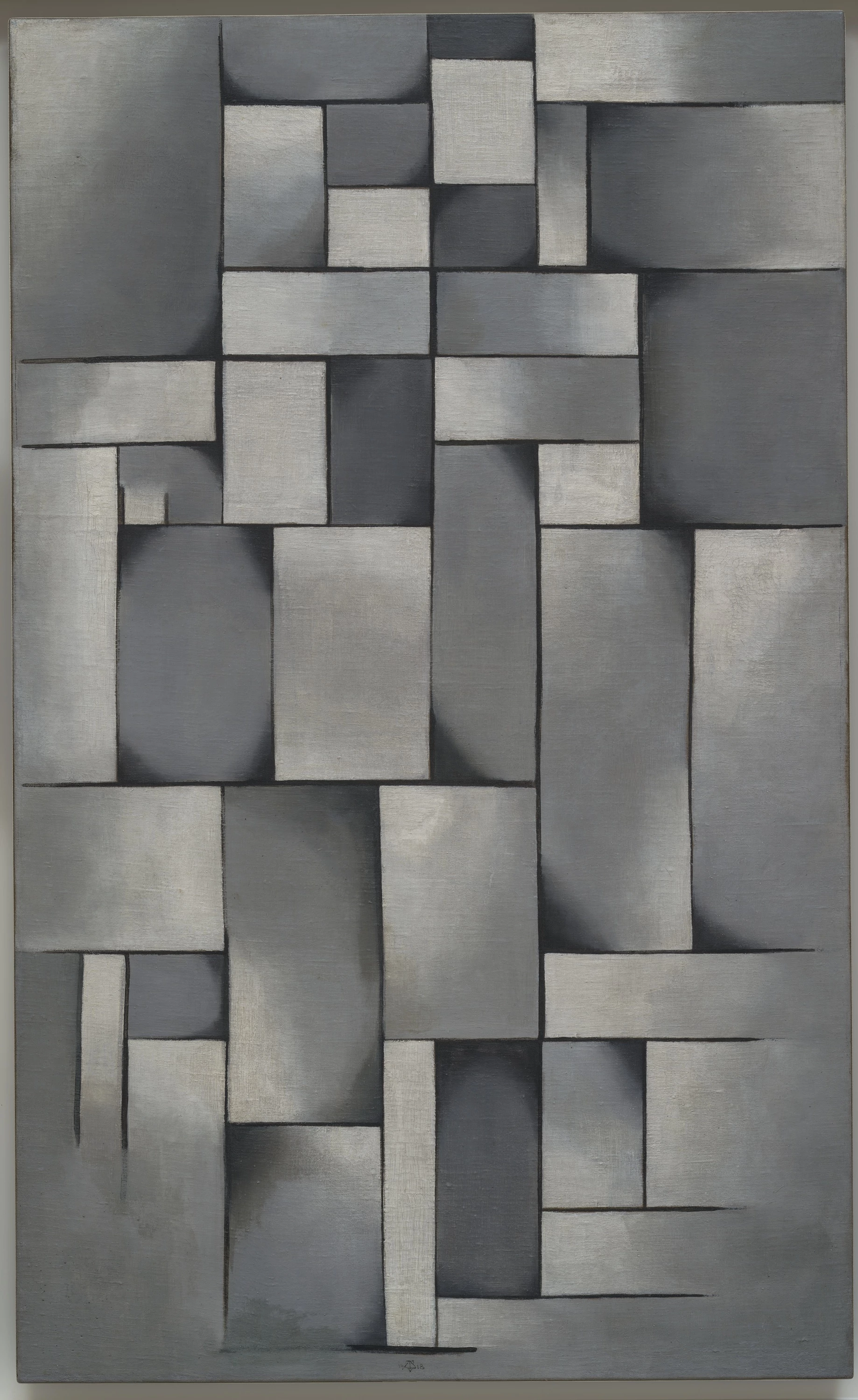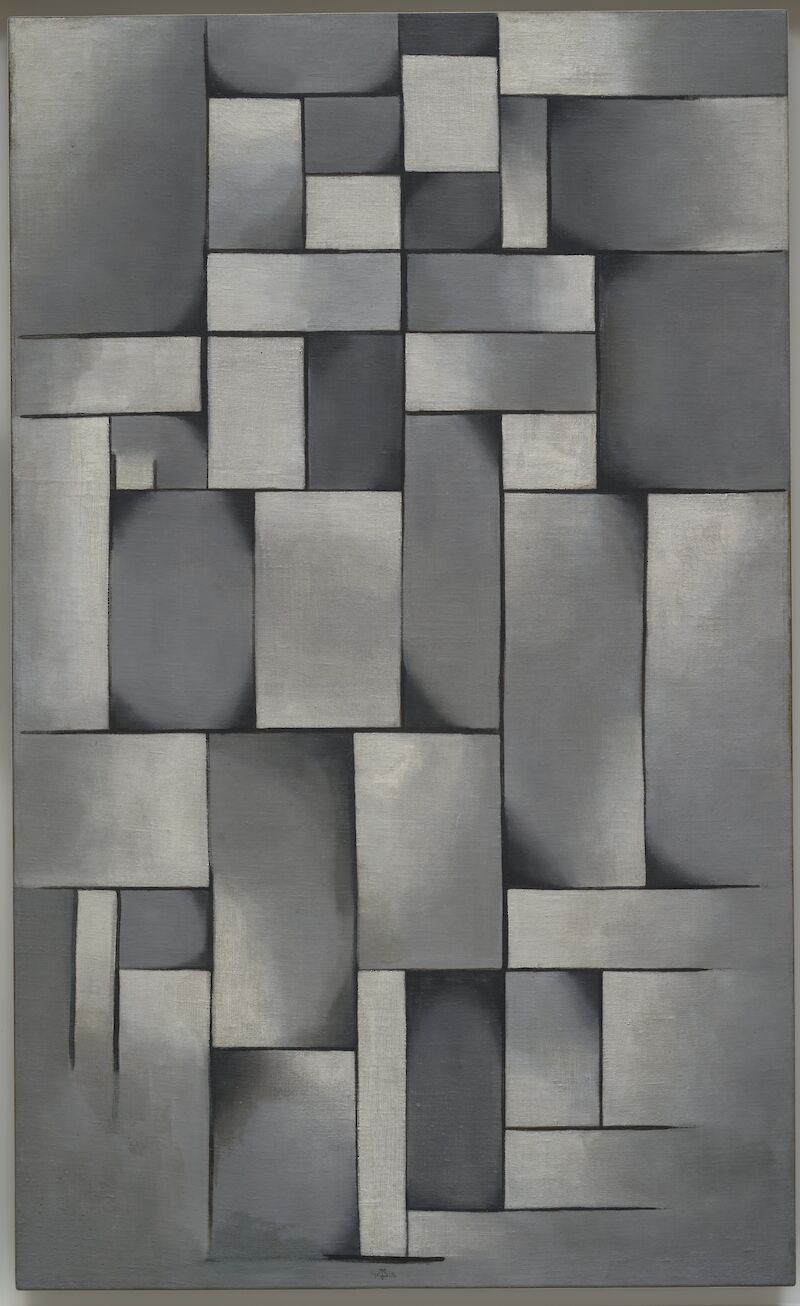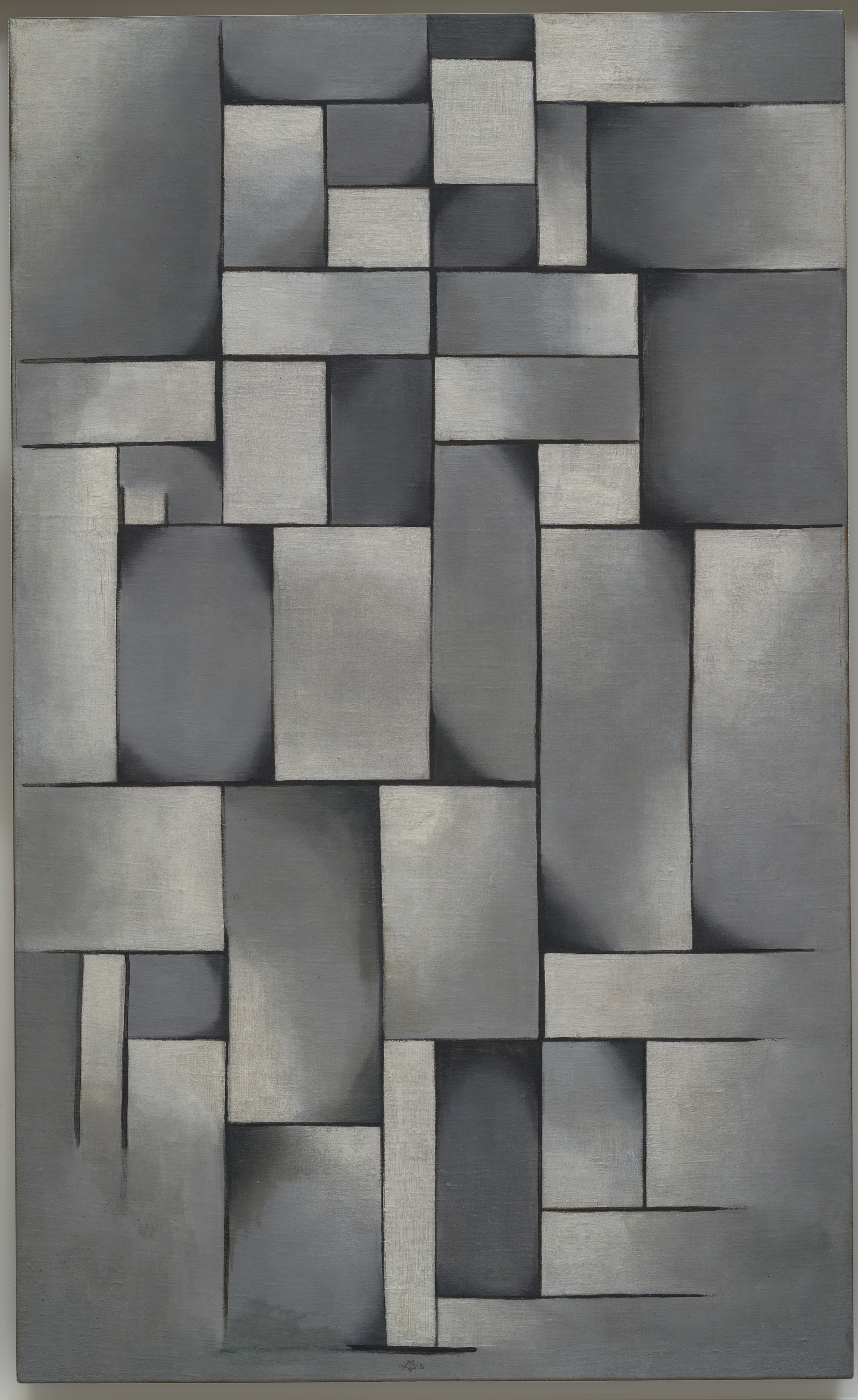


Composition in Gray is minimal to the point of monotony, a dour stack of rectangles. But this painting by Theo van Doesburg captures a pivotal moment in the evolution of modern art.
In 1919, Van Doesburg was working with Piet Mondrian, attempting to push their artistic practice past the current dominant art movement: Cubism. A year before, van Doesburg had written a manifesto defining ‘a new art’ which he called De Stijl or ‘The Style'. Composition in Gray captures the transition between these two styles. The gradients and ovals common to cubism, giving way to the rigid vertical and horizontal structure of the burgeoning De Stijl movement.
